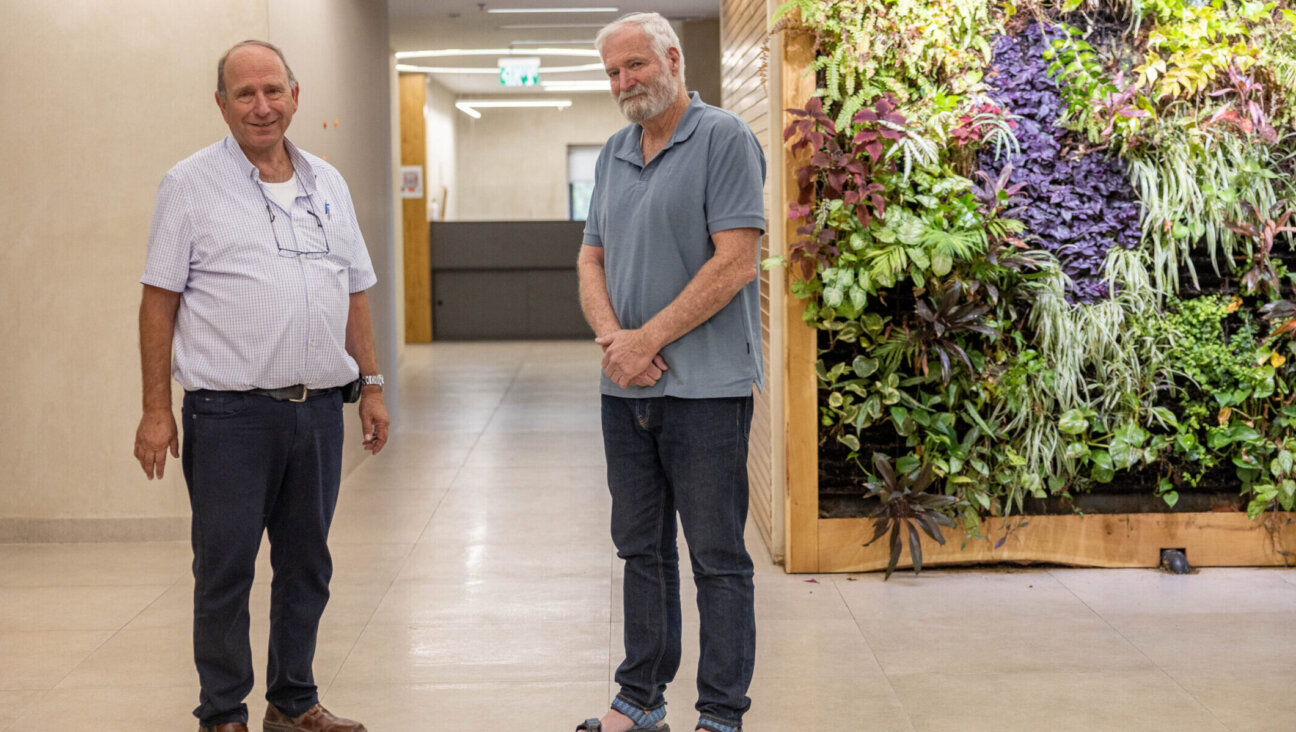For Jews, a Permanent Stake in the Immigration Debate

Echoes of the Past: This room at 97 Orchard Street is restored to look as it might have in the 1870s and 1880s, when the Jewish Gumpertz family from Prussia lived in the building Image by kEIkO NIWA/COURTESY LOWER EAST SIDE TENEMENT MUSEUM
American Jews instinctively understand their deep stake in the national conversation about immigration. While it would be hard to point to any policy consensus, it is clear that many Jews are troubled — even offended — by the anti-immigrant hysteria growing in the blogosphere and by the demagogic exploitation of the issue in the political arena.
This is not an expression of narrow self-interest; Jews are not so much concerned with protecting America’s open doors as a potential haven for Jewish populations abroad who might someday need to seek refuge, as they are reminded of their own personal and communal histories as reflected in the aspirations of contemporary immigrants from Asia, Africa and Latin America. For Jews, these new immigrants do not constitute “the other,” foreigners to be grudgingly tolerated. Indeed, tolerance is too stingy a word for the Jewish attitude toward newcomers whose presence reenacts a version of their own experience in the United States.
The stories we draw on at the Lower East Side Tenement Museum help explain the Jewish willingness to feel personal connections between the immigrant past and the immigrant present. We depict historically accurate and nuanced interpretations of hope and struggle, accommodation and disappointment — of individuals and families negotiating difficult circumstances in a new land — that reach visitors emotionally as well as intellectually. Our various tours of tenement homes present iconic Lower East Side immigration experiences by following the fortunes of actual families from the past, hailing from present-day Poland, Lithuania, Germany, Italy, Ireland and Greece, who lived in our landmark building at 97 Orchard Street from the time it was constructed in 1863 until it was condemned as unfit for human occupancy and shuttered in 1935.
Our building’s period of occupancy has limited the museum’s focus to the era of heaviest Jewish immigration — the period, not coincidentally, in which American policy grew increasingly hostile to new immigrants. Beginning with Chinese exclusion in 1882 and culminating in the race-based quota regime of the 1924 Johnson-Reed Act, the U.S. restricted the welcome it offered racially suspect immigrants, including those from Eastern and Southern Europe. Besides reducing Jewish immigration to a trickle and heightening the vulnerability of European Jews to the Holocaust, Johnson-Reed for good measure included an outright ban on Asian immigration.
Restrictive immigration marked a departure from traditional American policies designed to occupy the land and expand the labor force. Indeed, a growing national concern with ancestry and race marked a departure from the way that the generation of the Founding Fathers had constructed American identity around ideology, not ancestry. Needing to imagine that the nation had other than an Anglo-Saxon identity had been, after all, one consequence of the revolution from Britain. Emphasizing the importance of liberty, opportunity and other inclusive ideologies was another.
Americans began to edge back from race to once again embrace ideology as the source of national identity during World War II, which pitted Allied armies against a German enemy that proclaimed a creed of racial superiority. Two post-war refugee acts opened America’s borders to predominantly Eastern European victims of Nazism, and the 1965 Hart-Celler Immigration and Nationality Act ended the race-based system of immigration quotas. The Tenement Museum will be able to tell this story in a newly acquired structure that housed a post-war Jewish refugee family, Chinese tenants, Puerto Ricans (who had been United States citizens since the Jones-Shafroth Act of 1917) and Dominicans. Planning has begun on the installation of apartment exhibits that will extend the Museum’s narrative into the modern period that severed the connection between race and citizenship, between belonging to a different — and at best tolerated — population, and being full participants in American peoplehood.
The current xenophobic climate raises fears, however, that this inclusive, civil rights-inflected sense of how Americans constitute themselves as a people may unravel. Perhaps the most frightening aspect is the serious political challenge to birthright citizenship, the concept enshrined in the Constitution’s 14th Amendment that individuals enjoy citizenship by simple virtue of birth in this nation. Given the long sweep of Jewish history, perhaps no American principle is more fundamental. The bizarre effort to read President Obama out of the American people by virtue of his imagined foreign birth or equally improbable Muslim faith reinforces the conclusion that forces at work in the broader public portend badly.
An ideologically-based citizenship — a fundamental principle of this nation’s birth — offers the best source of national cohesion. Emphasizing shared ideals and the rich commonalities of the American experience is where the Jewish stake in the contemporary immigration debate is anchored.
A message from our CEO & publisher Rachel Fishman Feddersen

I hope you appreciated this article. Before you go, I’d like to ask you to please support the Forward’s award-winning, nonprofit journalism during this critical time.
We’ve set a goal to raise $260,000 by December 31. That’s an ambitious goal, but one that will give us the resources we need to invest in the high quality news, opinion, analysis and cultural coverage that isn’t available anywhere else.
If you feel inspired to make an impact, now is the time to give something back. Join us as a member at your most generous level.
— Rachel Fishman Feddersen, Publisher and CEO























